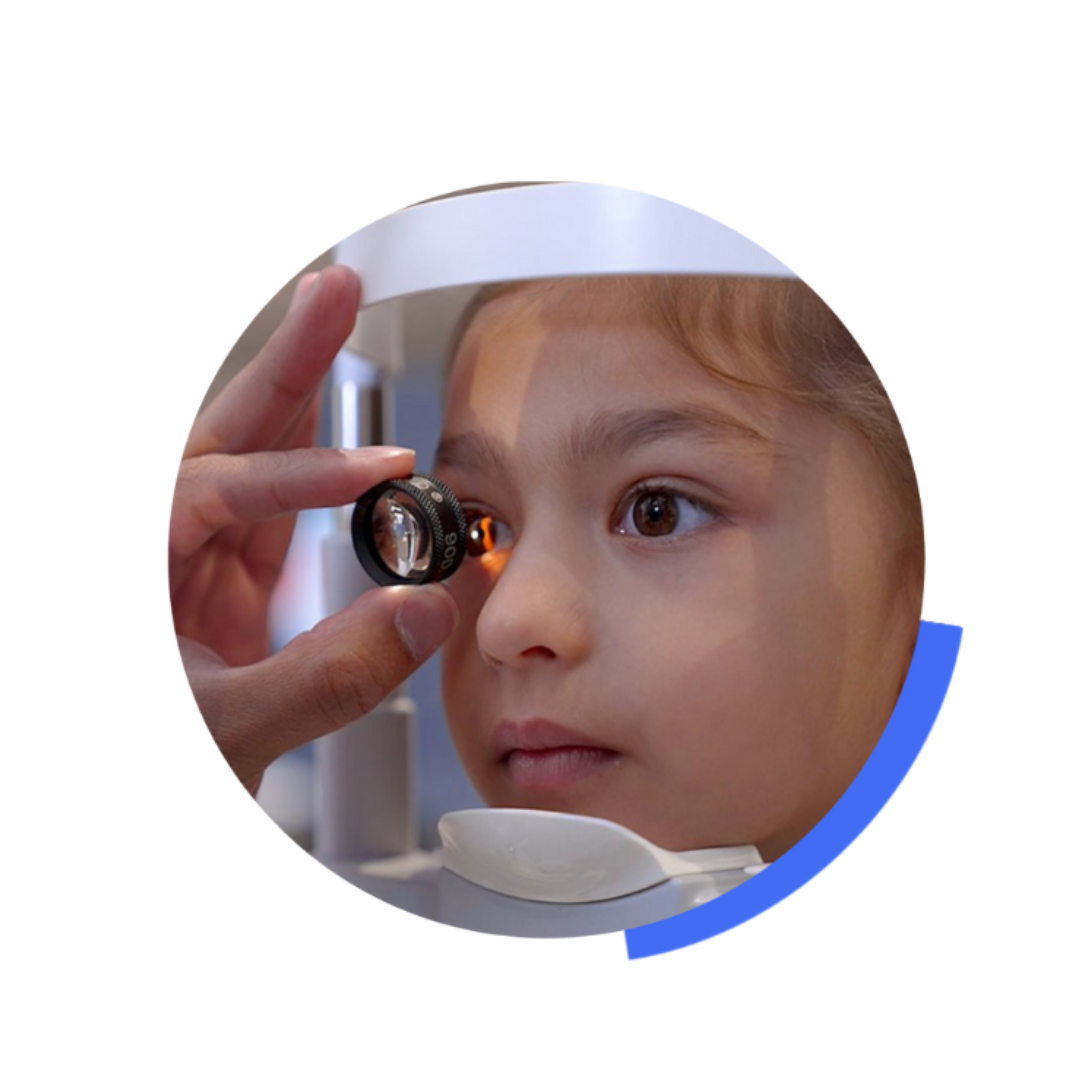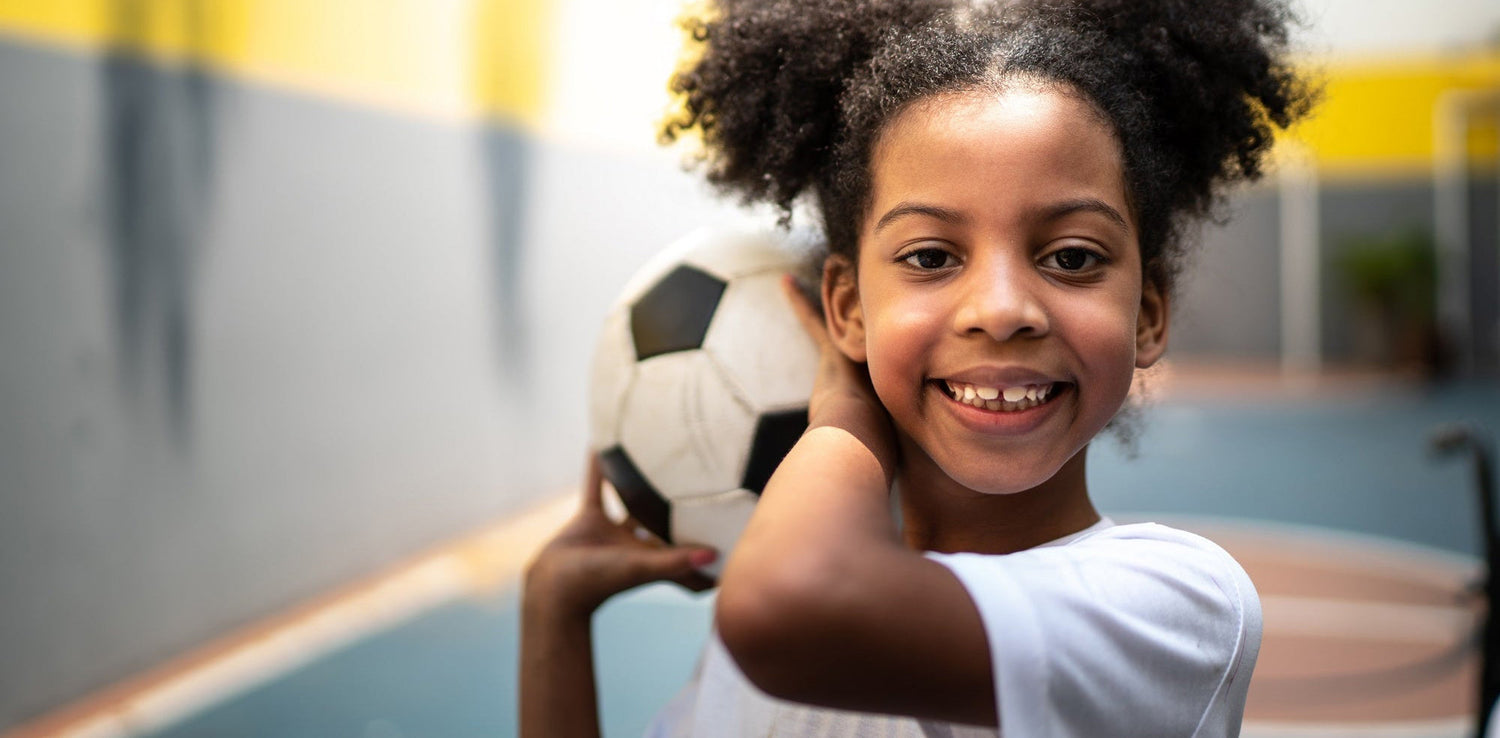
What is myopia (nearsightedness)?
Myopia, or nearsightedness, is when you can see objects up close but can’t see distant objects clearly. It’s an anatomical issue in the eye where there’s too much of a curve in the cornea or natural lens (the eyeball is too long). What happens is that when the eyes focus light, it ends up in the front of the retina, instead of directly on it, making distant objects blurry.
Get an annual eye exam so you can see clearly wherever you look.
Say goodbye to blurriness
Book an appointment

What are the effects of myopia?
Myopia affects distance vision, so you may have trouble spotting your exit while driving or watching television. Myopia can have other symptoms such as headaches, increased eye strain, fatigue and squinting. If you’ve been noticing any of these signs along with increased blurriness, it’s best to book an eye exam.
What are the risks of myopia?
Some myopic conditions worsen to high myopia, where prescription and eye length can be much higher. If left untreated, high myopia patients are at an increased risk for:
Cataracts
(clouding of the eye’s lens)
Retinal detachment
(retinal pulls away from its normal position)
Macular degeneration
(affects central vision; inability to see objects right in front of you)
Myopia and children
Myopia usually begins in childhood and progresses through adulthood. For children, this often leads to trouble seeing the whiteboard, focusing in class or difficulty with sports and other activities that require distant vision. You may notice your child moving closer to the television, computer screen or a book. Early treatment plans can minimize the effects.

Book your star pupils an eye exam
If your child is starting kindergarten, our Better Sight. Better Grades. program will cover their first pair of glasses with a comprehensive eye exam.
Book now
How is Myopia Treated?
There’s no cure for myopia but glasses and contact lenses can correct your vision. The earlier myopia is spotted, the better. But detection is the best kind of medicine. That’s why regular eye exams, early detection and intervention can slow down the progression of myopia.
If your child is diagnosed with myopia at an early age, management will likely continue until they turn 18 (and even into early adulthood). Everyone is different, so the best thing to do is devise a myopia management strategy with your doctors to achieve the strongest potential impact.
Currently, research tells us that with proper eye care and management:
- ½ of myopes stabilize by 16
- ¾ of myopes stabilize by 18-23
What else can I do?
There are also many day-to-day things you can do to help look after your child's vision.
Get outside
Natural light significantly reduces your child’s risk of developing myopia. We recommend at least two hours of outdoor time daily — with proper sun protection!
Reduce near work
Encourage your child to spend time away from screens and minimize near work and screens as much as you can.
Prescription eyewear
Screens are part of the curriculum now, but they can still strain your child’s eyes. Prescription eyewear equipped with blue-light lenses lets your child study with less strain.
Follow the 20/20/20 rule
During near work or screen time, look away every 20 minutes at something at least 20 feet away for at least 20 seconds, making 4-5 complete blinks.
Regular eye exams
Prevention is the best kind of medicine. A comprehensive eye exam update syour prescription and provides early detection for other eye and health conditions.

What current treatment options are available?
After the eye exam and diagnosis, you and your doctor will work together to devise a myopia management plan for yourself or your child. Remember that myopic eyes are elongated, which happens because the eye is growing at a faster rate. This means that if it continues to stretch, their vision will worsen over time. A combination of treatments like specialized drops, contact lenses and glasses will help slow this progression:
Orthokeratology, or Ortho-K lenses:
Custom-made rigid contact lenses that are worn overnight to reshape the eye
Specialty glasses:
Enhanced regular prescription lenses that help focus light and restore distance vision.
Pharmacological Eyedrops:
Low-dose atropine eye drops are widely used to help slow the progression of myopia
FYidoctors offers a variety of treatment options, and our doctors can prescribe and provide myopia control lenses and technology to help your child.rrent treatment options are available?
We build your eyewear according to your unique needs. Stop by and see the difference.
Lenses with benefits
Find a location



